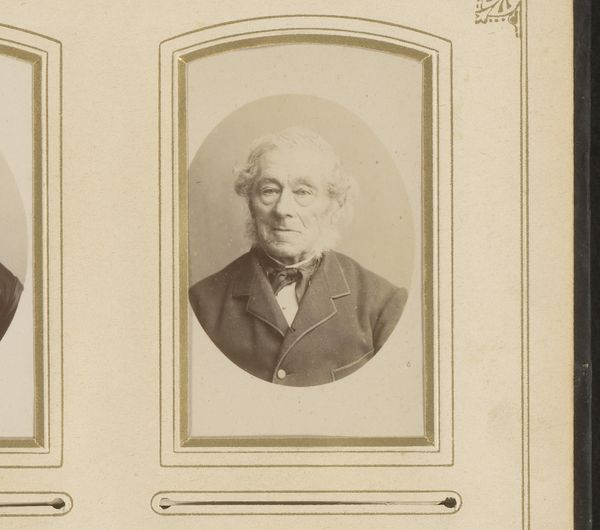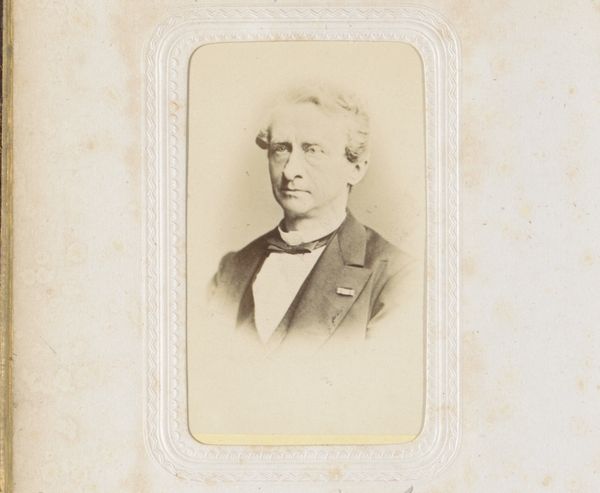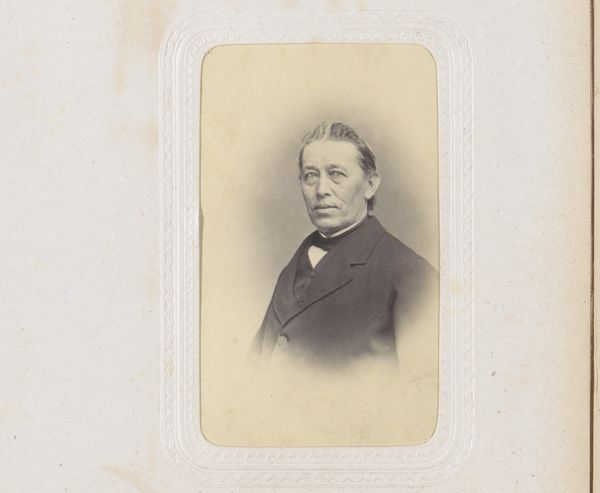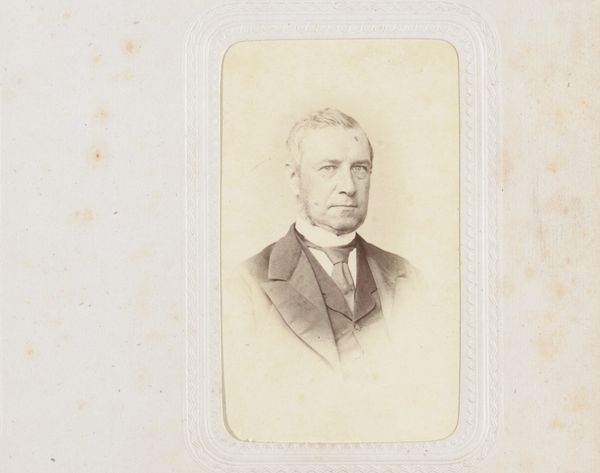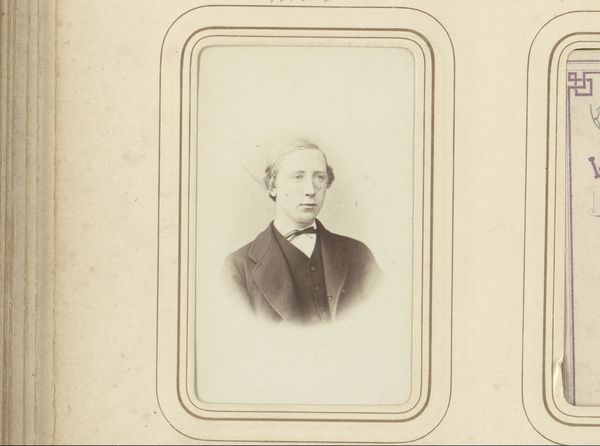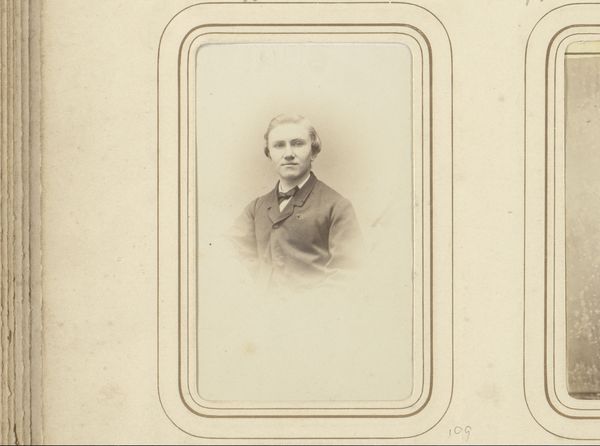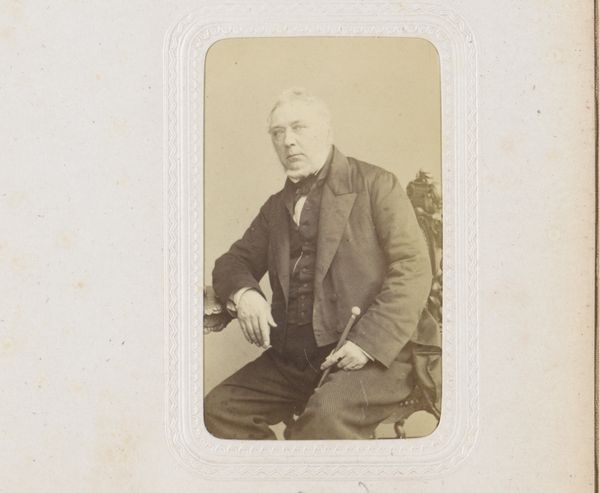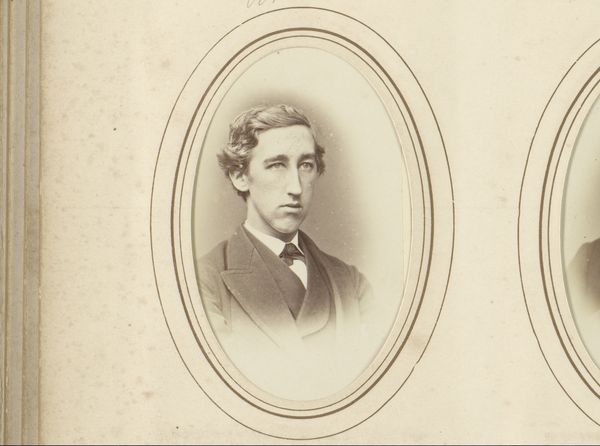
photography, gelatin-silver-print
#
portrait
#
photography
#
gelatin-silver-print
#
realism
Dimensions: height 103 mm, width 63 mm
Copyright: Rijks Museum: Open Domain
Curator: Let's turn our attention to this photograph titled, "Portret van Reverend David Honeyman D.C.L," made in 1876 by William Notman, using a gelatin-silver print. Editor: He has kind eyes! It's got a nostalgic feeling to it, almost sepia-toned even though it is a gelatin-silver print. It's as if I'm looking into a quiet moment of contemplation, wouldn't you say? Curator: Absolutely. Consider the rise of photography at this period, especially as applied by studios like Notman's in Halifax. Photography democratized portraiture but also involved very particular processes that affected the final product, impacting the way sitters were perceived and portrayed. Think about the staging involved. Editor: Yes! There is a formal stiffness and fragility at play. Do you imagine, for a second, being present with Notman himself when this image was being made? And then feeling those moments lingering within this piece that remains so relevant today. Curator: Well, William Notman became renowned during his career for photographic processes, making carte de visite prints, an extremely popular commodity, easily shared. Notman made good use of those innovations. Editor: It's charmingly earnest. It makes you wonder about Honeyman himself, his world. I almost feel like I want to pen an essay just from his energy emanating through this photographic image. There's definitely a story brimming to the surface. Curator: Yes, he must have known so many different kinds of individuals, his perspectives could potentially enlighten our lives with a unique perspective. Perhaps if we look beyond its realist technique, beyond photography's inherent reproducibility at this time, we can really start examining this figure’s contribution during the 19th century in Nova Scotia. Editor: Ultimately, this picture’s beautiful, old-timey allure really takes us into another dimension, doesn't it? I find myself lost inside Notman's artistry. Curator: Yes. Looking at it from today's perspective, it helps highlight just how rapidly our understanding of materiality has changed through history. Thank you for that lovely perspective!
Comments
No comments
Be the first to comment and join the conversation on the ultimate creative platform.


